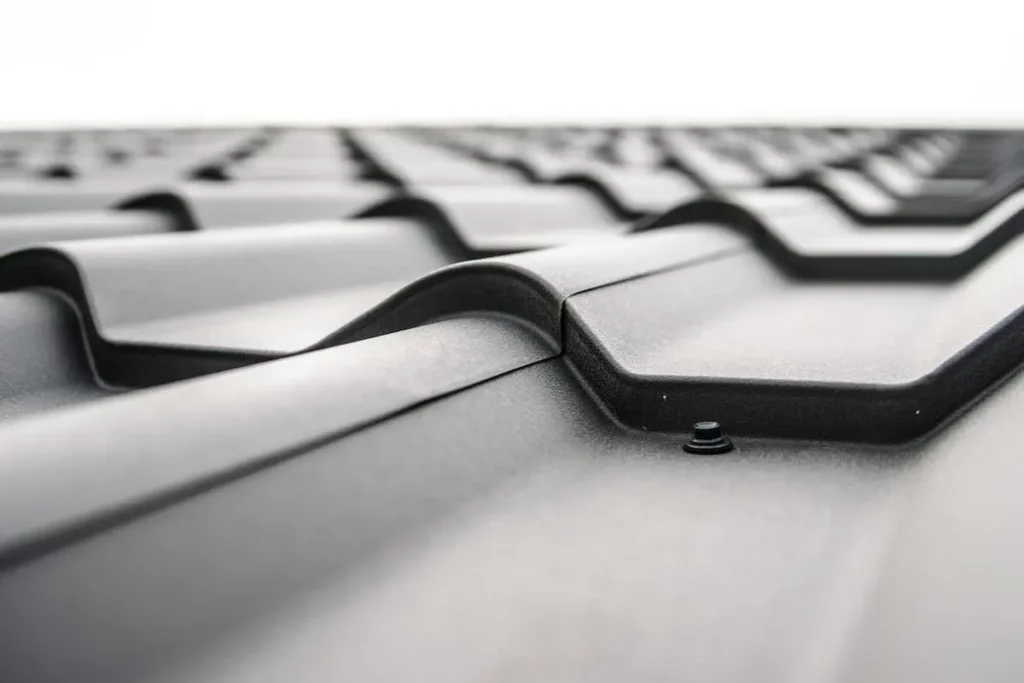Introduction to metal roofing
Metal roofing is becoming increasingly popular due to its durability, longevity, and low maintenance. It is available in different materials, such as steel and aluminum, each with unique benefits and considerations. While steel roofing offers excellent durability and resistance to impact, aluminum roofing is lightweight and resistant to corrosion. Understanding the differences between these materials can help you make an informed decision when considering metal roofing for your home.

Steel roofing: pros and cons
Steel roofing is a durable and strong option for your home. It is resistant to fire, rot, and insects, making it a low-maintenance choice. Steel roofs can last up to 50 years, and they are often made from recycled materials, which is environmentally friendly. However, they may rust if scratched or damaged, and they can be noisy during heavy rain or hailstorms. Keep in mind that steel roofs can also be more expensive than other roofing materials, so be sure to consider your budget.
Steel roofing: durability and longevity
Steel roofing is known for its exceptional durability and longevity. It can last 50 years or more, with some warranties even extending to 100 years. This makes it a highly reliable and long-lasting option for your home’s roof. Steel roofing is also resistant to fire, rot, and insects, further adding to its durability. Additionally, steel roofs require minimal maintenance, making them a practical and cost-effective choice in the long run.
Aluminum roofing: pros and cons
The pros of aluminum roofing include its lightweight nature, resistance to corrosion, and ability to be easily installed. Cons of this type of roofing are its higher cost compared to steel, as well as its potential for denting and damage in severe weather conditions.
Aluminum roofing: corrosion resistance
Aluminum roofing is known for its strong resistance to corrosion, making it an ideal choice for areas with high humidity or exposure to saltwater. This means that aluminum roofs are less likely to rust or deteriorate over time compared to steel roofs. Additionally, aluminum is a lightweight material, which makes it easier to install and puts less strain on the underlying structure of your home.
Comparing the cost of steel and aluminum roofing
When comparing the cost of steel and aluminum roofing, it’s important to consider a few key points:
- Material Cost: Steel roofing tends to be less expensive upfront compared to aluminum. The cost of aluminum roofing is usually higher due to the higher cost of materials.
- Installation Cost: The installation cost for steel and aluminum roofing can vary based on factors like the complexity of the job, labor costs in your area, and the roofing contractor’s expertise.
- Long-Term Cost: While aluminum roofing may have a higher initial cost, it’s generally more resistant to corrosion and may require less maintenance over the long term, potentially saving you money in the future.
When deciding between steel and aluminum roofing, it’s essential to weigh the initial material and installation costs against the long-term durability and maintenance requirements of each option.
Environmental impact of steel and aluminum roofing
Steel roofing is generally considered to have a higher environmental impact compared to aluminum roofing. Steel production involves mining iron ore and coal, which contribute to environmental pollution and greenhouse gas emissions. Additionally, the process of converting iron ore into steel requires a significant amount of energy and water, further impacting the environment. On the other hand, aluminum roofing is often considered more environmentally friendly because of its lightweight nature, which reduces transportation emissions, and its high recyclability. Aluminum can be recycled repeatedly without losing its quality, making it a more sustainable option for roofing.
Aesthetic options for steel and aluminum roofing
Both steel and aluminum roofing offer a variety of aesthetic options to suit different architectural styles and personal preferences. Steel roofing comes in a range of colors and finishes, including standard painted, granular coated, and premium painted options. On the other hand, aluminum roofing offers even more color choices and can also mimic the look of other materials, such as wood or slate. Additionally, both steel and aluminum roofing can be formed into various shapes, such as standing seam, shingles, or tiles, providing flexibility in achieving the desired aesthetic for your home.
Installation considerations for steel and aluminum roofing
When it comes to installing steel or aluminum roofing, there are a few important factors to consider. Here are some installation considerations for both types of roofing materials:
- Weight: Steel roofing is heavier than aluminum, so it may require additional support for the structure. On the other hand, aluminum roofing is lightweight and can be installed on a wider variety of structures without needing additional reinforcement.
- Corrosion resistance: Aluminum is naturally resistant to corrosion, making it a good choice for areas with high humidity or salt air. Steel can be prone to rust if not properly treated, so it may require more maintenance in certain environments.
- Cost: Steel roofing tends to be more affordable than aluminum, but the long-term maintenance costs should also be factored in. Aluminum may be a more cost-effective option in the long run due to its corrosion resistance and lower maintenance requirements.
By considering these factors, you can make an informed decision on whether steel or aluminum roofing is the best choice for your installation needs.
Conclusion: Choosing the best metal roof
When it comes to choosing the best metal roof between steel and aluminum, several factors should be considered. Both steel and aluminum have their advantages and disadvantages, so it’s essential to make an informed decision based on your specific needs and circumstances.
Steel Roof:
- Durability: Steel roofs are typically stronger and more durable than aluminum roofs, making them a good choice for areas prone to severe weather conditions.
- Cost: Steel roofs are generally more affordable upfront compared to aluminum, but they may require more maintenance over time.
- Weight: Steel is heavier than aluminum, so it’s essential to consider the structural requirements of your building when choosing a steel roof.
Aluminum Roof:
- Corrosion Resistance: Aluminum is naturally resistant to corrosion, making it an excellent choice for coastal or humid areas.
- Lightweight: Aluminum is lighter than steel, which can make installation easier and put less stress on the structure of the building.
- Longevity: While aluminum roofs may be more expensive initially, they often require less maintenance over time, potentially leading to long-term cost savings.
In conclusion, the best metal roof for you depends on your specific needs and circumstances. Consider factors such as your budget, climate, maintenance preferences, and structural requirements when making your decision. Both steel and aluminum roofs have their unique benefits, so it’s important to weigh these carefully before making a choice.

